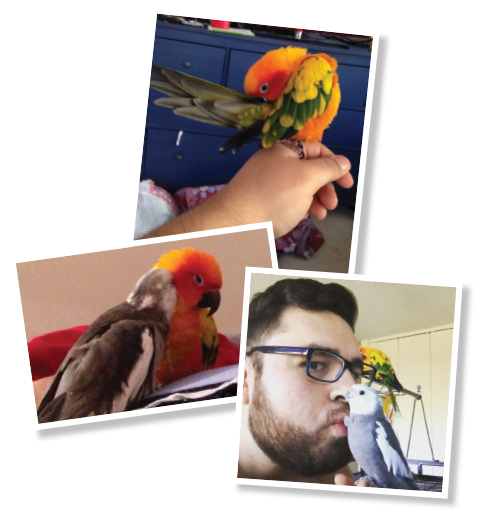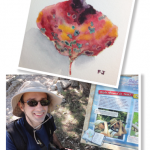New Roommates

Top: Sol, preening her feathers. Middle: Casper helps Sol straighten and clean her feathers. Bottom: Dr. Paramo kisses Casper, his favorite cockatiel.
While attending Rutgers New Jersey Medical School, Newark, N.J., Dr. Paramo couldn’t have any pets due to his grueling academic and work schedule. But by his fourth year of medical school, he realized the important social role parrots had played in his life. So he purchased a gray and white male cockatiel he called Casper, and a yellow and orange female conure, a
medium-sized parrot, he named Sol.
Life was good.
Dr. Paramo graduated medical school in 2015 and completed his three-year residency at Zucker School of Medicine in 2018. He’ll finish his two-year rheumatology fellowship at the same university in June 2020.
“I decided early in medical school that I didn’t want to concentrate on one organ system,” he says. “I also tended to like outpatient more than inpatient care. I chose rheumatology because it’s a multi-system specialty that’s outpatient, is more patient-oriented than other fields, has patient continuity and introduces innovations based on current research.”
Love ’em or Leave ’em
Casper and Sol, who are now five years old, are an important part of Dr. Paramo’s family. Just like some people, he says these birds have “clownish” personality traits and are very social animals.
Sol, for example, enjoys being petted on her head or chest and will eat nearly anything, especially vegetables, mangos, dried fruits and chicken bones. Not Casper. He prefers sitting on or near someone and is very picky when it comes to food. He actually becomes irritated or angry if you try feeding him something he doesn’t enjoy. Sol loves coffee, which is a big no-no for birds if it contains milk or cream, while Dr. Paramo says Casper “goes crazy” over rice and won’t stop eating until you take it away from him.
They do share some traits. Both are troublemakers, Dr. Paramo says. Sometimes, Casper pokes small holes on the top of the wooden doors at Dr. Paramo’s home, so a barrier of some kind, like a small towel, must be placed on each door. Both birds also try to bite electrical cords and are extremely scared of stuffed animals.
As for Sol, well, she screams—a lot. “Generations back, when Sol’s ancestors lived in the wild, they communicated with each other by screaming,” Dr. Paramo says.

